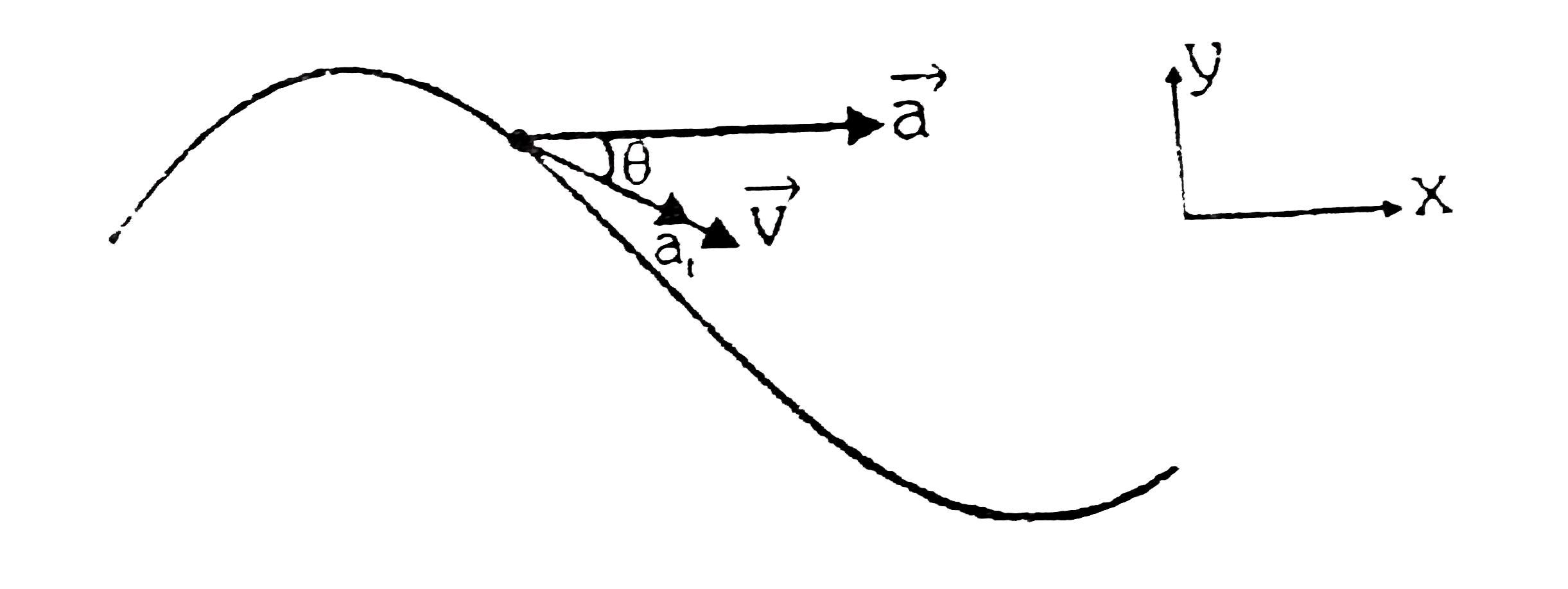A particle moves with a tangential acceleration where . If the speed of the particle is zero at , then find v (in ) at .

The correct Answer is:7
As
Topper's Solved these Questions
- BOOK - ALLENCHAPTER - KINEMATICSEXERCISE - EXERCISE-0155videos
KINEMATICS
- BOOK - ALLENCHAPTER - KINEMATICSEXERCISE - EXERCISE-0257videos
KINEMATICS
- BOOK - ALLENCHAPTER - ERROR AND MEASUREMENTEXERCISE - Part-2(Exercise-2)(B)22videos
ERROR AND MEASUREMENT
- BOOK - ALLENCHAPTER - KINEMATICS (MOTION ALONG A STRAIGHT LINE AND MOTION IN A PLANE)EXERCISE - BEGINNER S BOX-78videos
KINEMATICS (MOTION ALONG A STRAIGHT LINE AND MOTION IN A PLANE)
Similar Questions
Starting from origin at t=0, with initial velocity 5ˆjm/s, a particle moves in the x−y plane with a constant acceleration of (10ˆi−5ˆj)m/s2. Find the coordinates of the particle at the moment its y-coordinate is maximum.
View SolutionA particle is moving with a constant acceleration →a=ˆi−2ˆjm/s2 and instantaneous velocity →v=ˆi+2ˆj+2ˆkm/s then rate of change of speed of particle 1 second after this instant will be :
View SolutionTwo particles of equal masses have velocities →v1=4ˆims−1 and →v2=4ˆjms−1. First particle has an acceleration →a1=(5ˆi+5ˆj)ms−2, while the acceleration of the other particle is zero. The centre of mass of the two particles moves in a path of
View SolutionTwo particles of equal mass have velocities →v1=2ˆi=m/s−1 and →v2=2ˆjm/s−1. First particle has an acceleration →a1=(3ˆi+3ˆj)ms−2 while the acceleration of the other particle is zero. The centre of mass of the two particles moves in a path of.
View SolutionVelocity of a particle at some instant is v=(3ˆi+4ˆj+5ˆk)m/s. Find speed of the particle at this instant.
View SolutionA particle travels so that its acceleration is given by →a=5costˆi−3sintˆj. If the particle is located at (−3,2) at time t=0 and is moving with a velocity given by (−3ˆi+2ˆj). Find
(i) The velocity [→v=∫→a.dt] at time t and
(ii) The position vector [→r=∫→v.dt] of the particle at time t(t>0).View SolutionA particle has initial velocity of (3ˆi+4ˆj)m/s and a acceleration of (4ˆi−3ˆj)m/s2. Its speed after one second will be equal to :-
View SolutionA particle is moving with a position vector, →r=[a0sin(2πt)ˆi+a0cos(2πt)ˆj]. Then -
View SolutionA paarticle starts from origin at t=0 with a velocity 5.0ˆim/s and moves in x-y plane under action of a force which produces a constant acceleration of (3.0ˆi+2.0j)m/s2.
(a) What is the y-cordinate of the particle at the instant its x-coordinate is 84 m ? (b) What is the speed of the particle at this time?View SolutionA particle starts from the origin at t=0 with a velocity of 10.0ˆjm/s and moves in the x-y plane with a constant acceleration of (8.0ˆi+2.0ˆj)ms−2 . (a) At what time is the x-coordinate of the particle 16m ? What is the y-coordinate of the particle at that time ? (b) What is the speed of the particle at that time ?
View Solution

